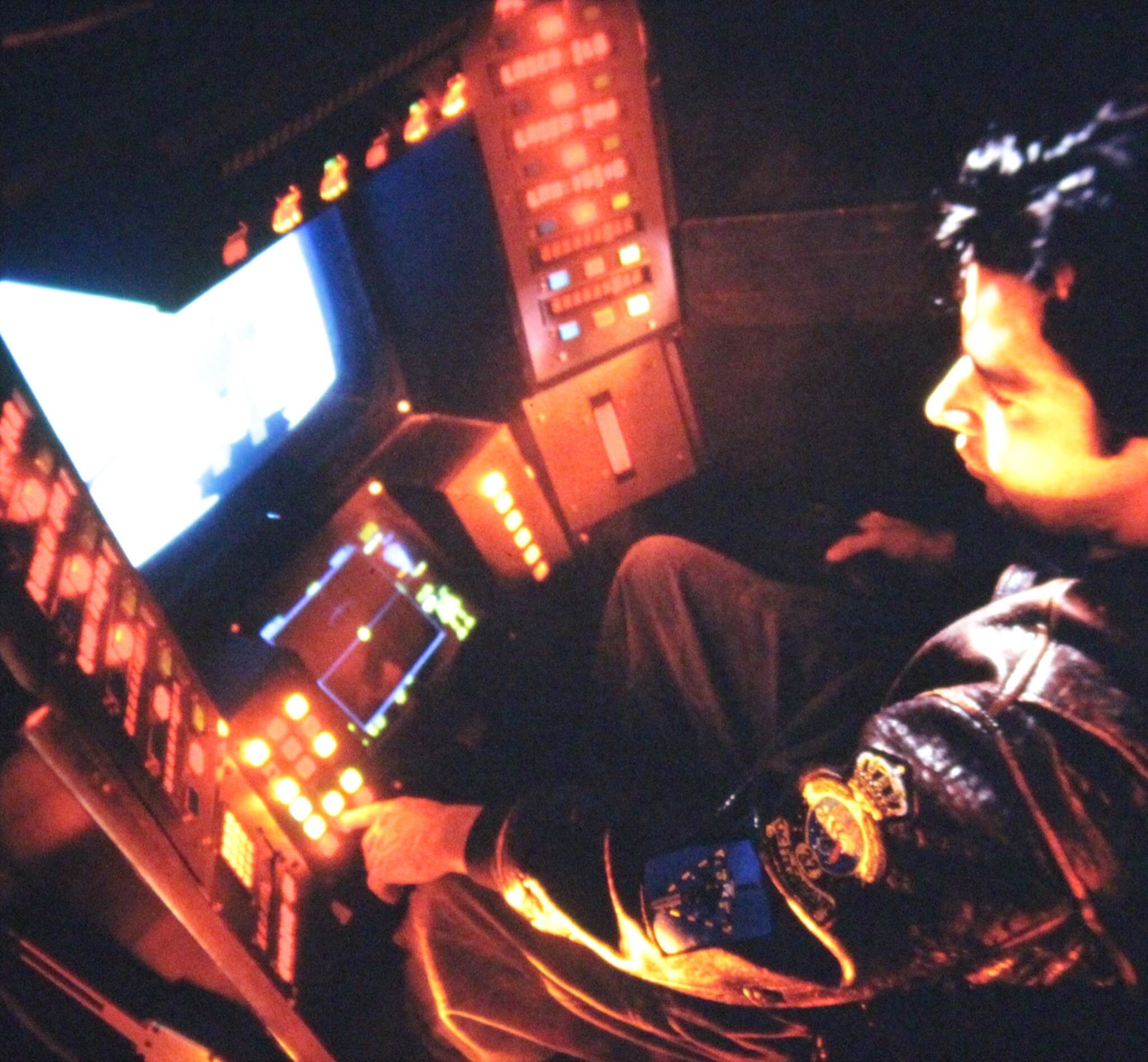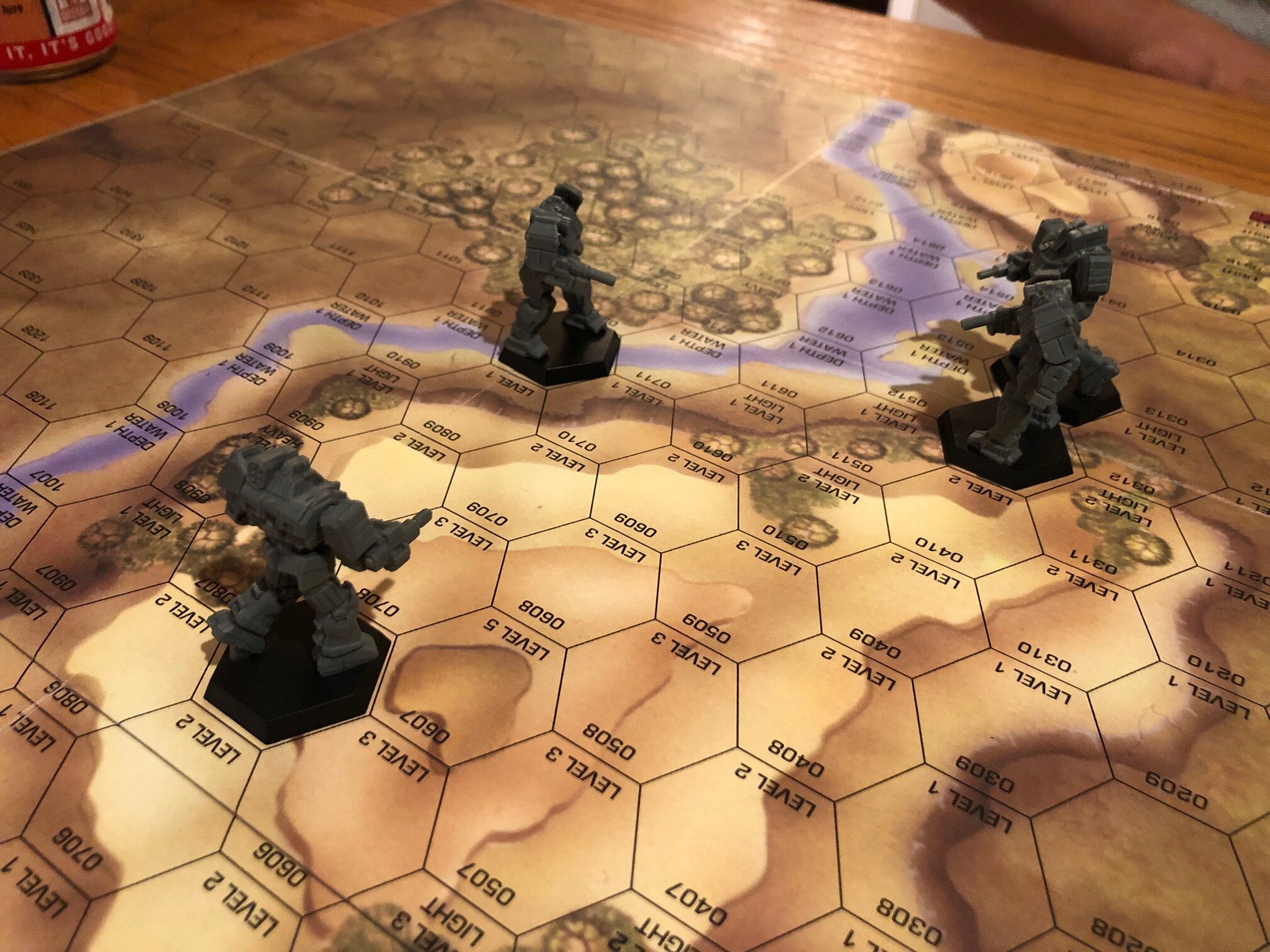Battletech: First Contact
There’s one game that’s been on my periphery, ever since I first began to dabble with miniatures, and that’s Battletech. This game has been around for ages, has had successful cartoon series, virtual reality combat arcades, and an incredible video game franchise. Despite always being around and available, it’s one of the few games I’ve managed to resist… until I met Jon (WiseKensai).
Unusual Beginnings
Now, I’m told that my background with Battletech is pretty Strange. I never got into the miniatures game, but before I bought my very first 40k miniature, I was already quite familiar with Battletech. I didn’t own any of the minis, didn’t read the novels, and never watched the cartoon, no, I played in the Battletech Combat Pods at Virtual World, in Southern California. I played at this Battle Center quite a few times, in fact, for my 13th birthday a limousine picked up me and a handful of my friends to go play at Virtual World. I bought technical manuals and memorized what all the various buttons, and switches controlled for the mechs I preferred to play. Sadly, once I got into mini games, I forgot entirely about Battletech, Virtual World shut down, and it was about 20 years before I gave it more than a passing thought.
As Jon and I plowed through our backlog of unplayed miniature games, using our weekly game night to play something besides Infinity, I knew it was only a matter of time before Battletech reared its head. Lately, Catalyst Games has done an amazing job making this incredibly complex game more accessible. There are new starter boxes, with a very manageable $20 price tag, as well as a new game mode which makes it less detailed, playing more like a standard 28mm game, rather than the highly complex combat simulation the game is known to be. With Beginner Boxes in hand, Jon came over, and we rolled for initiative.
My First Battle
Jon knowing that I’d appreciate the “real” experience of Battletech decided to teach me the unabridged rules, only limited by the mechs we were using. Since we both had the Beginner Box, we played the same mechs against each other to keep things simple. The mechs for this combat were a Wolverine WVR-6R, and a Griffin GRF-1S, or as I named them, Logan and Peter. The first thing I noticed in the game is that it’s complex, shockingly so. There are charts for charts, and modifiers for just about anything imaginable, and rules to handle just about anything you could think of… it make original 40k Rogue Trader look like kindergarten homework… and I kinda loved it.
Playing Infinity has prepared me for complex games, figuring out patterns, and tracking modifiers. It took a while, but eventually, the basics of the game started to click. Like Infinity, everything occurs simultaneously, and you’re working to minimizing your penalties while maximizing them for your opponent. Maneuvering is a bit tricky, since there are 3 basic modes of movement (Walk, Run, Jump), each with it’s own benefits and problems. Running is the fastest but not terribly maneuverable, while Jumping is about as fast as walking, incredibly maneuverable, but generates a lot of heat. Yes, you have to track the heat of all your equipment and weapons, the more you shoot, the more heat you produce, which can eventually cause critical overheating. Don’t worry though, you can build up and cool down heat, you can even stand in a river to give a boost to your heat sinks (provided they’re in the part of your mech that is submerged, i.e. your legs). As you take damage, engine fires, reactor breaches, etc., will cause all kinds of cascading failure.
Without a doubt, the mechs felt incredibly resilient as you played with them, but as they degraded it really felt catastrophic, limbs being blown off, mechs toppling over, fusion cores being breached. By the time the dust settled, Jon had clearly outplayed me, with one of my mechs left slowly drowning the pilot, face down in the river, with its gyroscopes destroyed, leaving no chance of getting back on its feet. The game took quite a while to play, despite only having 4 mechs on the table, and while there was a lot of looking up rules, when you knew what you were doing the pacing was really nice, despite it’s complexity.
Conclusion
The game is complex… incredibly complex, but if you’re looking for a game with incredible levels of granularity, or want to see huge robots jumping around the table and blasting off bits of armor, and the occasional limb, then it’s really top notch. Battletech is not for the faint of heart though, by far the most complex game system I’ve ever seen, and I’d be surprised if there was a more detailed minis game out there. Furthermore, the game is really bolstered by a MASSIVE amount of very well written fluff, with over 100 full-length novels, it’s a setting that you can really sink your teeth into.
As far as the miniatures themselves go, it can be pretty hit or miss. Many of the official miniatures are very dated, looking more like 80’s cartoons than what you’d imagine a futuristic mech to look like. That said, there are alternatives to the official minis, since there have been video games, many people have converted the video game mechs into STL files which can be 3D printed at home, and there are 3rd party vendors who will do nice resin prints of them as well. Furthermore, they’ve recently done an incredibly successful kickstarter to update their line of minis, which you can see below.
Well, now that I’ve cracked the seal, It’s quite likely I’ll pick up a few minis, so I can stomp around with Jon on some sweet hex-maps. I can totally see how some people get obsessed with the game, there is so much to learn both in rules and background, though I fully intend to keep it tame, but damn some of these mechs look cool.










